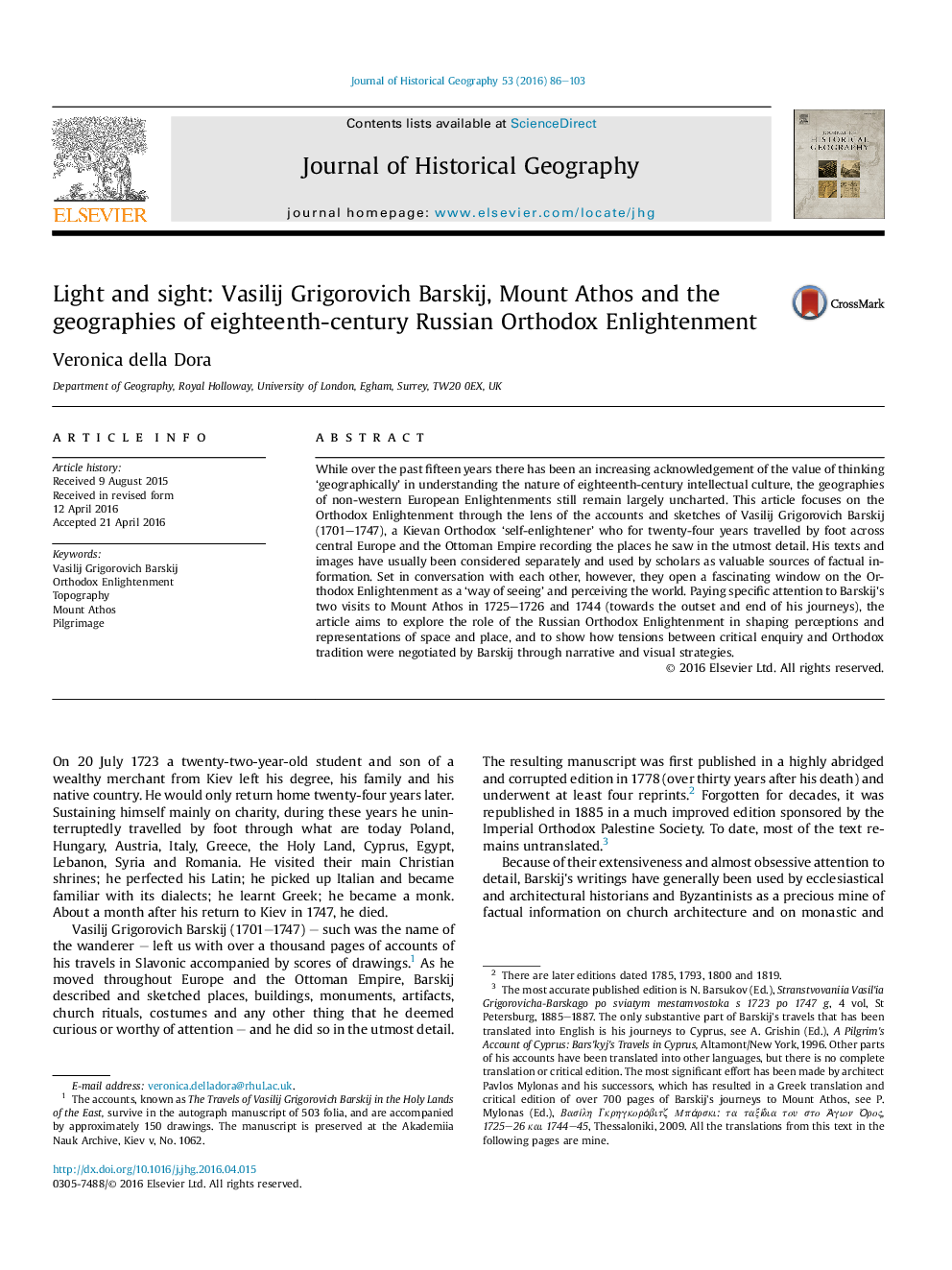| Article ID | Journal | Published Year | Pages | File Type |
|---|---|---|---|---|
| 1038884 | Journal of Historical Geography | 2016 | 18 Pages |
•Contributes to debates on the geographies of Enlightenment and religion from a non-Western perspective.•Explores the role of Russian Orthodox Enlightenment in shaping perceptions and representations of space and place.•Uses a biographical approach to trace Vasilij Grigorovich Barskij's lifelong process of ‘becoming an Orthodox enlightener’.•Shows how tensions between critical enquiry and Orthodox tradition were negotiated through narrative and visual strategies.
While over the past fifteen years there has been an increasing acknowledgement of the value of thinking ‘geographically’ in understanding the nature of eighteenth-century intellectual culture, the geographies of non-western European Enlightenments still remain largely uncharted. This article focuses on the Orthodox Enlightenment through the lens of the accounts and sketches of Vasilij Grigorovich Barskij (1701–1747), a Kievan Orthodox ‘self-enlightener’ who for twenty-four years travelled by foot across central Europe and the Ottoman Empire recording the places he saw in the utmost detail. His texts and images have usually been considered separately and used by scholars as valuable sources of factual information. Set in conversation with each other, however, they open a fascinating window on the Orthodox Enlightenment as a ‘way of seeing’ and perceiving the world. Paying specific attention to Barskij's two visits to Mount Athos in 1725–1726 and 1744 (towards the outset and end of his journeys), the article aims to explore the role of the Russian Orthodox Enlightenment in shaping perceptions and representations of space and place, and to show how tensions between critical enquiry and Orthodox tradition were negotiated by Barskij through narrative and visual strategies.
